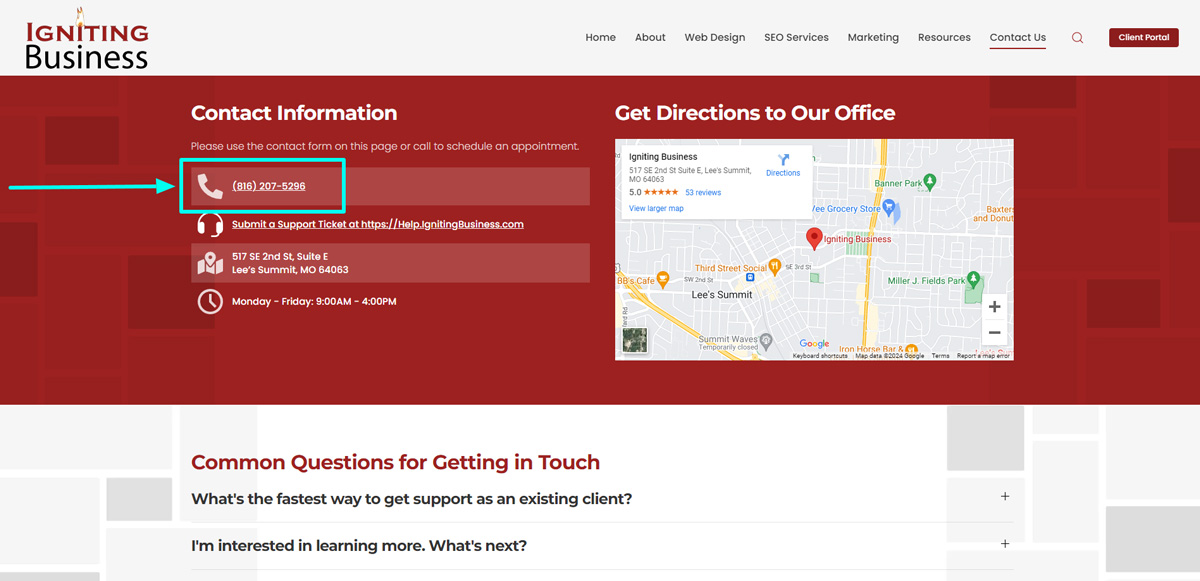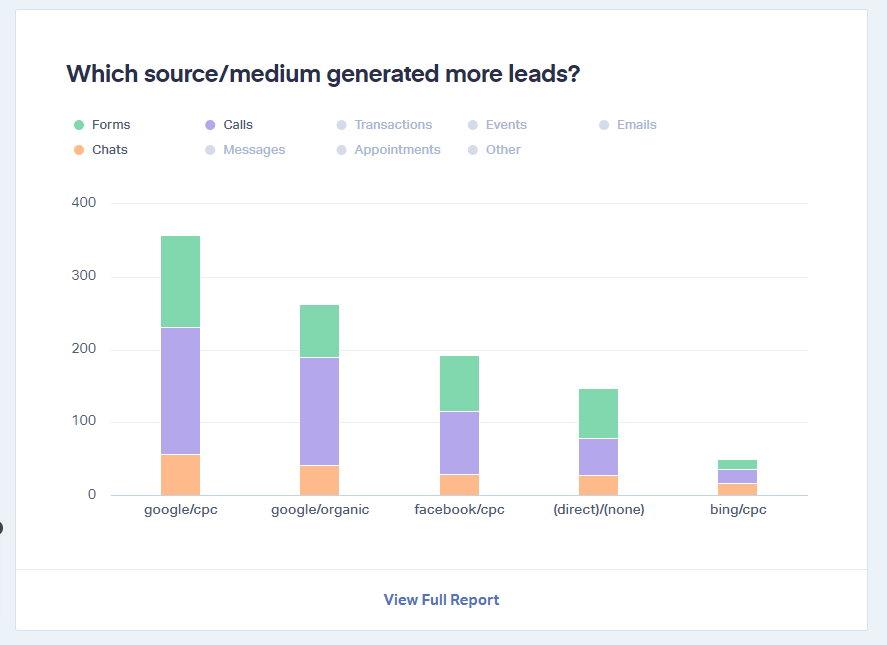What Is Dynamic Number Insertion (DNI) and Why It’s Essential for Your Marketing Campaigns
In today’s digital marketing landscape, understanding the nuances of how your audience interacts, both positively and negatively, with your campaigns is crucial for success. As CEO of Igniting Business, a company dedicated to helping small businesses thrive through digital marketing services, I've seen firsthand the transformative impact of using the right tools and technologies to track marketing efforts. One such tool that has become increasingly important for businesses aiming to optimize their marketing efforts is properly implementing Dynamic Number Insertion (DNI). Let’s dive into what DNI is, its pros and cons, and its vital role in successfully running Google Ads and other advertising campaigns.
Table of Contents
- How Does Dynamic Number Insertion (DNI) Work
- Pros and Cons of Using Dynamic Number Insertion
- Google Ads Dynamic Number Insertion (DNI) Feature Limitations
- Beyond Google Ads: The Landscape of DNI and Call Tracking Across Advertising Platforms
- How to Implement Dynamic Number Insertion
- The Case for Platform-Agnostic DNI and Conversion Tracking Tools
- Getting Started with Dynamic Number Insertion for Call Tracking
How Does Dynamic Number Insertion (DNI) Work
Dynamic Number Insertion is a sophisticated technology that allows businesses to track the effectiveness of their digital marketing campaigns by dynamically inserting call tracking phone numbers. When a potential customer visits your website, DNI technology dynamically changes the contact number displayed based on how they arrived at your site. Whether it's through a Google Ad, a Facebook campaign, or an organic search, the visitor will see a different phone number, allowing businesses to track which marketing efforts are generating calls. Of course, all the different tracking numbers will still deliver the caller to your desired primary number.
 Example of a Tracking Phone Number Dynamically Inserted on a Website
Example of a Tracking Phone Number Dynamically Inserted on a Website
Pros and Cons of Using Dynamic Number Insertion
While Dynamic Number Insertion is certainly powerful, it does have some drawbacks as well.
Benefits of Using Dynamic Number Insertion
Enhanced Tracking and ROI Measurement – When implemented correctly, DNI allows precise data on which marketing channels are driving phone calls, enabling businesses to optimize their advertising spend more effectively.
Tracking Both Click to Call and Manual Dials – One might argue that you can track clicks on your phone number (“tel links” in HTML) using a platform like Google Analytics. However, keep in mind that those clicks only account for users on mobile devices who use click-to-call (e.g. they tap the phone number and immediately dial). Other people may look at the phone number on their desktop or tablet device, then dial the number on a phone. Or perhaps an assistant is checking possible vendors and writes down a number to give to her boss to call. Both of those scenarios would not be tracked with click tracking via Google Analytics. However, DNI still works to track these phone calls since the number is substituted visually. Thus, if a user clicks (click-to-call) the number from a mobile device or manually dials a number, the call will still be tracked properly.
Improved Customer Experience – By routing calls based on the source, businesses can tailor the customer experience, ensuring callers are directed to the most appropriate team or individual. Additionally, some phone tracking systems allow businesses to utilize call recording and sentiment analysis to assess customer service quality.
Increased Scalability – Dynamic Number Insertion will allow for additional numbers to be activated as needed for additional ad variation testing or even completely different advertising campaign platforms (when using a holistic call tracking system).
Disadvantages of Using Dynamic Number Insertion:
Increased Complexity – Implementing DNI requires a certain level of technical know-how, which might be a barrier for some small businesses. Typically, implementing DNI requires the assistance of a qualified web developer. Additionally, DNI must be thoroughly tested to confirm the implementation was successful.
Added Cost – While DNI can significantly enhance marketing effectiveness, it comes at a cost. There is typically an associated cost with installation (using a web developer) plus ongoing cost of platform usage. Businesses need to weigh the benefits against the investment.
Potential SEO (Search Engine Optimization) Concerns – Incorrect implementation of DNI can potentially impact SEO if search engines encounter multiple numbers on your site, though this can be mitigated with proper setup.
Google Ads Dynamic Number Insertion (DNI) Feature Limitations
For businesses leveraging Google Ads, DNI is not just beneficial; it's essential. Google Ads allows for the integration of DNI to track phone calls as conversions. This capability means advertisers can see exactly which ads, keywords, and campaigns are leading to phone calls. Without DNI, businesses might only have a partial view of their campaign effectiveness, missing out on crucial data that could inform strategy adjustments and budget allocations.
Google Ads provides their own DNI system. However, the caveat is that it only tracks Google Ads performance. So, if you’re running other campaigns, you will not have data on those calls. Google does not offer a service that allows you to expand your DNI to apply to other marketing channels.
Additionally, Google keeps changing its systems regarding marketing data attribution configuration options. These control which marketing channel gets the “credit” for the call and how its attributed. These ever-evolving attribution models with limited options for users are causing confusion and frustration amongst marketers who want to make sure their data is accurate.
As such, we strongly recommend using a robust call tracking platform that is not specific to a particular advertising platform.
Beyond Google Ads: The Landscape of DNI and Call Tracking Across Advertising Platforms
While Google Ads offers its own version of DNI and conversion tracking, other advertising platforms like Facebook, Bing, and LinkedIn have developed their own conversion tracking variations which require separate implementation steps.
Each platform's approach to tracking phone calls, form submissions, purchases, etc. enables advertisers to track the effectiveness of their campaigns within those ecosystems. However, relying solely on platform-specific DNI tools can lead to fragmented data and a lack of a cohesive overview of campaign performance across all marketing channels.
How to Implement Dynamic Number Insertion
Implementing Dynamic Number Insertion on your website will depend on which marketing platform you are using. For example, Google Ads will have a separate set of instructions vs. Facebook. Additionally, you will have to consider how phone numbers are listed within your website (e.g. as text, one buttons, within images or embedded maps, etc.). Reference the documentation for your specific advertising system.
Or you could save a ton of time and use an all-in-one conversion tracking system instead.
The Case for Platform-Agnostic DNI and Conversion Tracking Tools
![]()
Given the limitations of using platform-specific DNI solutions, there’s a compelling argument for utilizing a non-platform specific DNI tool. Conversion tracking software allows businesses to track calls (and other desired conversions) across all marketing campaigns, regardless of the advertising platform, providing a unified view of marketing effectiveness. This holistic approach enables more informed decision-making and strategy optimization.
Additionally, if you change marketing platforms, you do not actually have to change your call tracking/DNI system.
Top Call Tracking Platforms: WhatConverts, CallRail, and CallTrackingMetrics
Several call tracking platforms offer robust DNI capabilities, but three stand out for their features and reliability: WhatConverts, CallRail, and CallTrackingMetrics. Each platform has its strengths and weaknesses, but at Igniting Business, we have a strong preference for WhatConverts due to its comprehensive feature set and ease of use. We also love that it integrates with so many third-party systems for conversion tracking including Google Ads, Bing Ads, LinkedIn Ads, ClickFunnels, Facebook/Instagram Ads, various scheduling tools (Acuity, Calendly, etc.), and literally over 1,000 different systems.

WhatConverts offers detailed call tracking leveraging DNI, allows us to attribute phone calls back to the specific marketing activity, including granular data on what campaign, ad group, and even keyword performance.
Additionally, WhatConverts tracks other conversion types including form submissions, e-commerce transactions, and even live chats.
Getting Started with Dynamic Number Insertion for Call Tracking
Dynamic Number Insertion is more than just a tracking technology; it’s a cornerstone of modern digital marketing, enabling businesses to gain deep insights into the effectiveness of their marketing efforts. By leveraging DNI, businesses can make informed decisions, optimize their marketing spend, and ultimately drive better results. Whether through your advertising platform’s DNI script or using a platform-agnostic tool like WhatConverts, the power of DNI is undeniable. As we continue to navigate the complexities of digital marketing, technologies like DNI will play a pivotal role in shaping the future of how businesses connect with their customers.
To keep up with technologies that can make your marketing efforts more efficient, consider subscribing to our free monthly newsletter. We pack it full of actional tips on marketing, SEO, and web design.
At no additional cost to you, we may receive a commission if you click on some of the links on this website and make a purchase.
About the author
Ben Seidel is the CEO and Founder of Igniting Business. Ben has been serving hundreds of small businesses with web design and SEO services for over 15 years and covering digital marketing related topics since 2012.
Over the years, Ben has been recognized on a local and national level, including entrepreneurship awards from both the NFIB and NASE and being featured in publications such as CNBC Universal, Yahoo News, Intuit Small Business, CIO.com, Mizzou Magazine, and Fox Business.